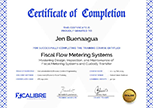| Date | Venue | Fee | |
|---|---|---|---|
| 11 Aug - 22 Aug 2025 | Dubai – UAE | $ 9,900 | Register Now |
| 27 Oct - 07 Nov 2025 | Cape Town - South Africa | $ 11,900 | Register Now |
| 01 Dec - 12 Dec 2025 | Dubai – UAE | $ 9,900 | Register Now |
| 10 Aug - 21 Aug 2026 | Dubai – UAE | $ 11,900 | Register Now |
| 26 Oct - 06 Nov 2026 | Cape Town - South Africa | $ 11,900 | Register Now |
| 30 Nov - 11 Dec 2026 | Dubai – UAE | $ 11,900 | Register Now |
About the Course
After the successful development of conventional oil & gas resources, more companies are now unlocking the potential of tight, shale and unconventional resources. Globally, the resource potential for shale gas and oil is massive; it is estimated that 80% of the oil remaining in place globally is unconventional. Conventional oil and gas wells flow commercially, naturally, i.e. without multi-stage hydraulic fracturing. Even with massive horizontal well hydraulic fracturing, unconventional oil and gas wells decline (deplete) dramatically faster than conventional wells. So, the scale of activity to maintain production is dramatically larger.
Unconventional reservoirs include “shales”, tight-gas sandstones, gas and oil shales, coalbed methane, heavy oil and tar sands, fractured reservoirs, and gas hydrates. The accumulation in one geological formation may include both conventional and unconventional intervals. Deposition and accumulation of economically viable unconventional reservoirs depend on numerous factors. It is also vital to understand the characteristics, rock properties, lithology, accumulations, geologic age, petroleum systems and production of unconventional resources to commercially tap into unconventional resources development opportunities.
The global experience with unconventional resources exploration and exploitation has led to a step change in extraction technologies and economics. This 10-day interactive Tight, Shale, and Unconventional Oil & Gas Resources training course will highlight field-proven novel methods and new technologies as applied to unconventional resources, including case studies and analogs from different parts of the world.
Core Objectives
The delegates will achieve the following objectives:
- Understand the list of evaluation requirements for analysis of unconventional resources
- Identify unconventional reservoirs from well data
- Determine organic matter content (Total Organic Carbon: TOC) and maturity
- Develop well construction, hydraulic fracturing and production testing plans
- Present a preliminary economic evaluation for a given unconventional area
Training Approach
This training course will utilise various proven adult learning techniques to ensure maximum understanding, comprehension and retention of the information and innovative methods presented, including presentation of theoretical concepts, team and individual exercises, case study analyses, educational videos and real-life applications. The delegates will also learn how to develop innovative strategies for unconventional resource development for an actual field and will be acquainted with requirements to reduce unconventional risk elements and boost success.
The Attendees
This training course is highly recommended for management, planning, operations, and engineering professionals.
Likewise, it will be valuable to the disciplines but not limited to the following:
- Leaders in the Oil & Gas Industry
- Petroleum and Reservoir Engineering
- Geology and Geo-science
- Geochemistry
- Geo-mechanics
- Petrophysics
- Drilling, Well Construction, and Completion
- Hydraulic Fracturing
- Production Engineering
- Regulatory, Security, and Political Authorities
- Energy Technologists
- Researchers
- Market and Business Analysts
- Project Management
- Oil & Gas Data Management
- Oil & Gas Finance, Investment, and Planning
- Professionals working in the Oil & Energy Business
Daily Discussion
DAY ONE: UNCONVENTIONAL RESOURCES OVERVIEW
- Industry Definitions
- Conventional vs Unconventional
- Unconventional Oil & Gas Models
- Unconventional Resource Characteristics
- Global Occurrence of Unconventional Resources
DAY TWO: UNCONVENTIONAL GEOSCIENCE
- Unconventional Reservoirs
- Core Analysis
- Typical Unconventional Maps
- Van Krevlen Diagram
- Organic Quality
- Kerogen and Vitrinite Reflectance
- Thermal Alteration Index
- Geochemical Modeling
DAY THREE: UNCONVENTIONAL PETROPHYSICS
- Unconventional Petrophysical Evaluation
- Well Profile
- Unconventional Logging Applications
- Building a Petrophysical Model
- Advanced Applications
DAY FOUR: UNCONVENTIONAL GEOPHYSICS AND GEOMECHANICS
- Seismic Utilisation in Unconventional
- Framework for Data Integration
- Regional Exploration and Appraisal
- Geomechanics for Unconventional
- Mechanical Rock Characterisation
DAY FIVE: UNCONVENTIONAL DRILLING AND WELL CONSTRUCTION
- Sweet Spotting
- Sweet Spot Mapping
- Unconventional Drilling
- Directional Drilling
- Well Construction
DAY SIX: HYDRAULIC FRACTURING
- Fracturing Unconventional
- Frac Stimulation Workflow
- Frac Geometry and Conductivity
- Wellsite Operations
- Fracturing Fluids and Additives
- Completion Techniques in Unconventional Resources
DAY SEVEN: PRODUCTION & ARTIFICIAL LIFT
- Production Engineering Fundamentals
- Artificial Lift Overview
- Plunger Lift
- Rod Lift
- Managing Artificial Lift Performance
DAY EIGHT: WELL TESTING IN UNCONVENTIONAL
- Well Performance
- Well Performance Types
- Flow Regime in Unconventional Wells
- Decline Curve Analysis
- Diagnostic Fracture Injection Test
- Production Forecasting
DAY NINE: RESOURCES AND RESERVES & ECONOMICS
- Resources vs Reserves
- Definitions for Unconventional Reservoirs
- Unconventional Risk Elements
- Unconventional De-Risking Stages
- Unconventional Plays
- Petroleum Economics
- Economic Evaluation
- Role of Petroleum Economics in Decision Making
DAY TEN: EMERGING TECHNOLOGIES AND IMPLEMENTING
- Data-Driven Field Development
- Intelligent Field Development Planning
- Immersive, Interactive Technologies
- Big Data Opportunities
- Implementing
Certificate Awarded
Upon successful completion of this training course, participants will be awarded a Certificate of Completion from XCalibre Training Centre, acknowledging their accomplishment. This certificate serves as a testament to their dedication to developing their skills and advancing their expertise in their respective fields.


